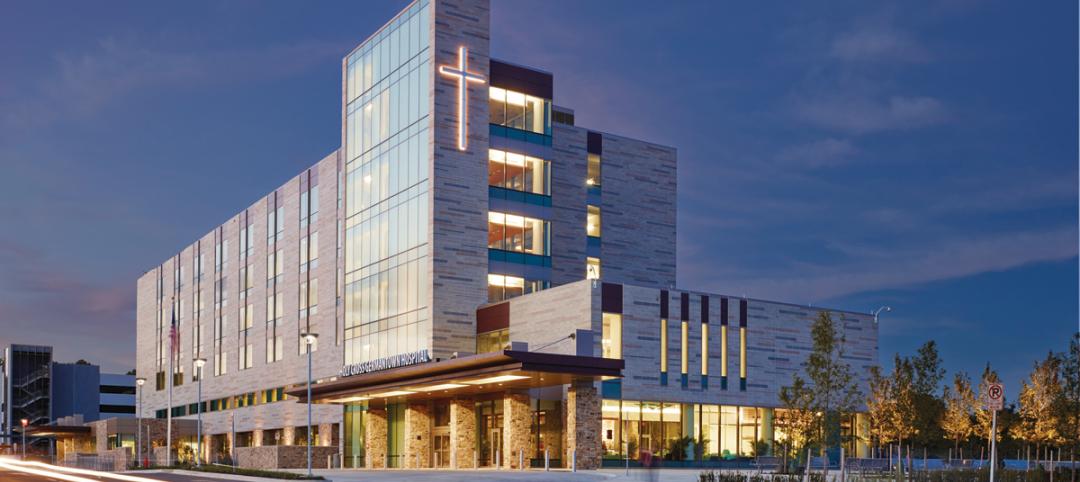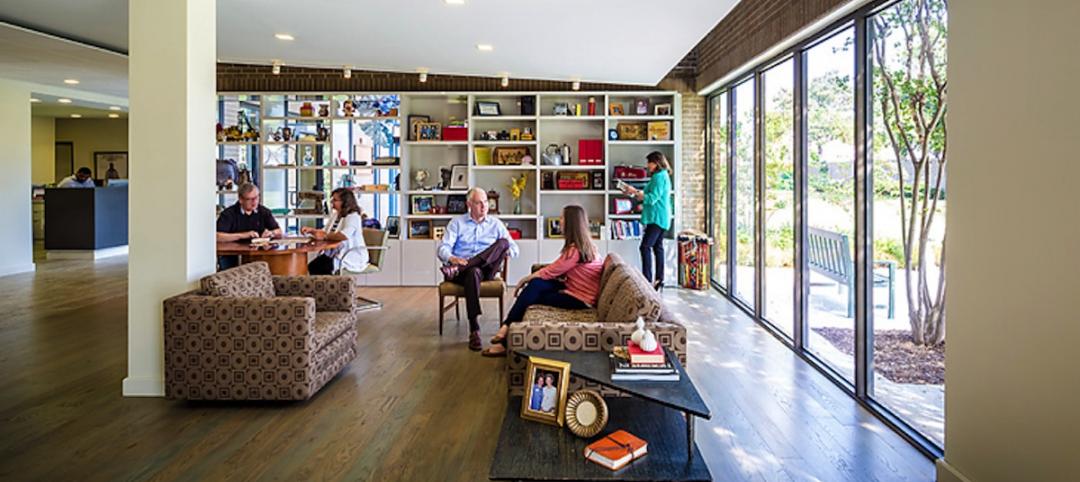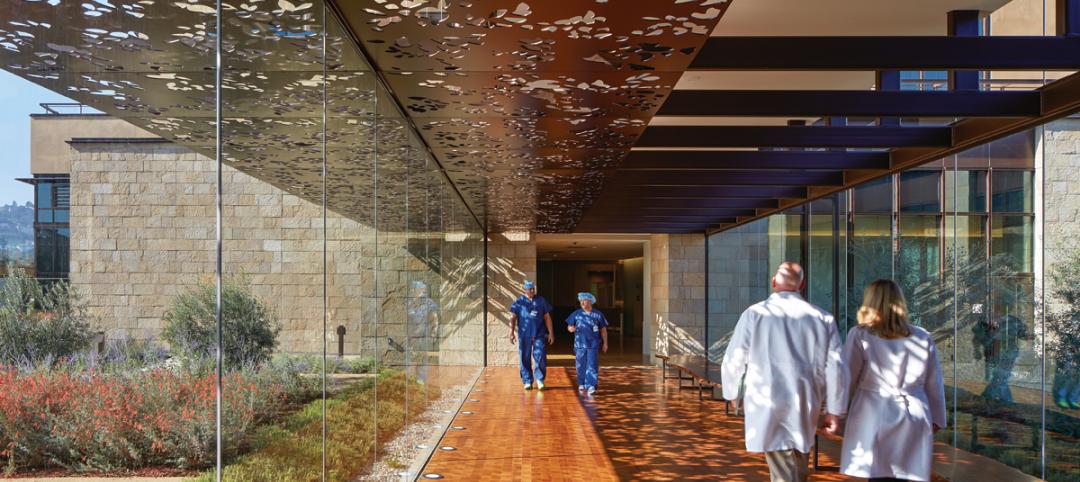The built environment has a profound impact on our natural environment, economy, health, and productivity, according to the US Green Building Council (USGBC). In the United States alone, buildings account for:
* 65% of electricity consumption
* 36% of energy use
* 40% of greenhouse gas emissions
* 30% of raw materials use
* 30% of waste output (136 million tons annually)
* 12% of potable water consumption
When you think about these statistics, it’s no wonder that a movement toward sustainability has been underway for the past 16 years. LEED (Leadership in Energy and Environmental Design), first introduced in 2000, is an ecology-oriented building certification program run under the auspices of the USGBC. LEED concentrates its efforts on improving performance across five key areas of environmental and human health: energy efficiency, indoor environmental quality, materials selection, sustainable site development and water savings.
The LEED rating is the globally accepted benchmark for the design, construction, and operation of high-performance green buildings. LEED certification provides independent, third-party verification that a building project is environmentally responsible and a healthy place to live and work.
Early adopters in the healthcare sector struggled with adapting LEED standards to the special needs of healthcare operations with limited success. Recognizing this, in 2009 the USGBC launched LEED for Healthcare, codifying in the LEED structure principles from the Green Guide for Healthcare. In 2011, LEED for Healthcare was updated and rebranded as LEED BD+C: Healthcare. This designation seeks to align the points of emphasis from the traditional LEED framework to the realities of the healthcare environment. For example, many of LEED’s Indoor Environmental Quality requirements were modified to reflect the need for infection prevention, as well as the existing code requirements for ventilation in healthcare facilities. Since its launch, over 40 different projects worldwide have met LEED criteria to be certified by the USGBC under LEED for Healthcare.
The pursuit of LEED can come with a price tag, in some cases adding a 1% to 3% premium to the overall construction budget. With tight budget constraints placed on healthcare executives, paying the additional premium to be “green” and achieving the project’s financial goals can be seen as mutually exclusive. However, when considering the triple bottom line—Pocketbook, People, and Planet—going green can be a responsible decision.
Pocketbook
Energy costs represent a large portion of healthcare expenditures. Recognizing this, over one fifth of the available LEED points are tied to energy performance gains. At a minimum, LEED requires a 10% improvement in building performance rating over the baseline case. Initially, achieving these credits can be costly. However, a payback in energy savings can be realized down the road. For example, high-efficiency chillers can cost 20% more than comparable standard units, but installing these more efficient units can result in up to a 42% reduction in the energy required for space cooling and a potential 48% savings in cooling tower use.
In addition, process water used to operate building systems such as boilers, chillers, cooling towers, and sterilizers comprises 75% of the water used at hospitals. Even modest improvements in process water efficiency (e.g. using condensate for cooling tower makeup water) can save institutions thousands of gallons of water annually.
Lighting upgrades, coupled with smart controls and increased natural lighting, can decrease electrical usage while creating an environment more conducive to healing. Recent advances in LED lighting technology have in many instances made the first cost of these fixtures equal to or less expensive than fluorescent or incandescent options.
People
Increasing connections to the natural environment and available natural light are important components of the LEED framework. A growing body of research shows positive correlation between maximizing natural light and reduced lengths of stay. Prudent owners are requesting that their designers go well beyond the code minimum requirements for clear views in order to take advantage of this correlation.
Giving patients control over their environment has been linked with better patient outcomes and higher patient satisfaction scores. Dimmable lighting systems, operable window shades, and in-room thermostats allow the in-room environment to be tailored to the particular needs of each patient. Coupled with a robust building automation system, these control points can also be used to reduce energy consumption by avoiding unnecessarily lighting or heating unoccupied spaces.
Building green can also increase staff satisfaction. Recent studies have shown a link between LEED facilities, staff comfort, and satisfaction levels. For example, a 2014 study in the Journal of Hospital Administration showed higher levels of staff engagement at the LEED Platinum Dell Children’s Hospital in Austin, Texas, compared to two other non-LEED hospitals. In addition, staff turnover decreased after moving from Dell’s predecessor into the new LEED facility.
Better indoor air quality-that is, the control of both internally generated and external pollutants-will also have a positive impact on the well-being of building occupants. Careful selection of building materials, along with proper ventilation, operation, and maintenance can improve indoor air quality. Improvements in the indoor environment of our healthcare facilities can have a profound impact on sensitive populations such as children, the elderly, and patients who are immunocompromised or have respiratory problems.
Planet
In 2009, researchers estimated that greenhouse gas emissions related to healthcare activities represented 8% of the total in the United States. More recent research has shown that the healthcare sector’s carbon footprint is growing, increasing by more than 30% over the past 10 years.
Greening both the built environment and the supply chain provides hospitals the opportunity to live up to their obligation to “first, do no harm.” By making environmentally conscious choices in the design and construction of their facilities, organizations can reduce their impact to the planet. As noted above, reduction in energy and water usage will show up on financial statements, but in considering the decision to go green administrators should weigh such non-financial measures as:
* waste diverted from landfills
* reduction in water drawn from aquifers
* reduction in wastewater discharged to local waterways
* reduction in carbon emissions from power plants, boilers, and generators
* access to green transit options, which lower the environmental impacts of staff and patient commuting
* use of sustainable building materials and products
Conclusion
As we approach the end of the second decade of LEED, the financial costs and benefits of going green are well documented. In many cases, due to increased demand for environmentally friendly products, the cost of implementing certain green strategies is negligible. However, there are still areas where green choices do not pass a purely financial test.
Fortunately, healthcare systems are not purely in the business of generating financial returns. Healthcare organizations must also care for people they encounter—patients, staff, and visitors—and the world around them. Considering the triple bottom line, pocketbook, people, and planet, gives healthcare executives additional justification for using green building strategies to advance the organization’s mission.
Related Stories
Healthcare Facilities | May 27, 2015
Rochester, Minn., looks to escape Twin Cities’ shadow with $6.5 billion biotech development
The 20-year plan would also be a boon to Mayo Clinic, this city’s best-known address.
Healthcare Facilities | Apr 28, 2015
10 things about Ebola from Eagleson Institute's infectious disease colloquium
Research institutions know how to handle life-threatening, highly contagious diseases like Ebola in the lab, but how do we handle them in healthcare settings?
Green | Apr 22, 2015
AIA Committee on the Environment recognizes Top 10 Green Projects
Seattle's Bullitt Center and the University Center at The New School are among AIA's top 10 green buildings for 2015.
Building Team Awards | Apr 10, 2015
14 projects that push AEC teaming to the limits
From Lean construction to tri-party IPD to advanced BIM/VDC coordination, these 14 Building Teams demonstrate the power of collaboration in delivering award-winning buildings. These are the 2015 Building Team Award winners.
Building Team Awards | Apr 10, 2015
Prefab saves the day for Denver hospital
Mortenson Construction and its partners completed the 831,000-sf, $623 million Saint Joseph Hospital well before the January 1, 2015, deadline, thanks largely to their extensive use of offsite prefabrication.
Building Team Awards | Apr 10, 2015
Virtual collaboration helps complete a hospital in 24 months
PinnacleHealth needed a new hospital STAT! This team delivered it in two years, start to finish.
Building Team Awards | Apr 9, 2015
Big D’s billion-dollar baby: New Parkland Hospital Tops the Chart | BD+C
Dallas’s new $1.27 billion public hospital preserves an important civic anchor, Texas-style.
Building Team Awards | Apr 9, 2015
‘Prudent, not opulent’ sets the tone for this Catholic hospital
This Building Team stuck with a project for seven years to get a new hospital built for a faithful client.
Healthcare Facilities | Apr 8, 2015
Designing for behavioral health: Balancing privacy and safety
Gensler's Jamie Huffcut discusses mental health in the U.S. and how design can affect behavioral health.
Building Team Awards | Apr 5, 2015
‘Project first’ philosophy shows team’s commitment to a true IPD on the San Carlos Center
Skanska and NBBJ join forces with Sutter Health on a medical center project where all three parties share the risk.

















